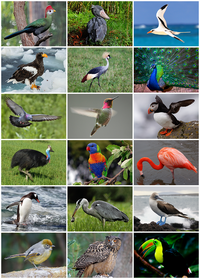
Photo from wikipedia
Butterflies play an important role in agroforestry landscapes mainly for performing essential ecosystem services viz, pollination and maintaining prey–predatory relationships. Despite these benefits, the diversity and functional role of butterfly… Click to show full abstract
Butterflies play an important role in agroforestry landscapes mainly for performing essential ecosystem services viz, pollination and maintaining prey–predatory relationships. Despite these benefits, the diversity and functional role of butterfly in agroforestry system has been poorly reported. Therefore, in this study, butterfly diversity was assessed in a circular multifunctional agroforestry system at foot hills of Nilgiris, India. This model is spread over 0.75 acre land with 24 different tree species and 8 intercrops arranged in four distinct quadrats of equal size (Q 1 = Flower, Q 2 = Vegetables, Q 3 = Curry leaf and Q 4 = Fodder). The butterflies were observed and counted by pollard walk method on alternate days in three time slots between 0900 to 1400 h during October – December, 2019. A total of eighteen butterfly species were recorded with maximum number under Nymphalidae (10) followed by Pieridae (5) and Papilionidae (3) families. Among the recorded species, Hypolimnas misippus, Pachliopta hector and Cepora nerissa comes under Schedule I and II of Indian Wildlife Act, 1972. Three species ( Papilio crino, Danaus chrysippus and Hebomoia glaucippe) falls under “Rare”, seven species under “Very Common”, five species under “Common” and the remaining three species under “Not evaluated” categories of IUCN red list. The relative abundance, species richness and diversity of butterfly were found significantly different among the quadrats in different time slots of the observation. Species richness was highest in Q1 (17) followed by Q2 (15), Q3 (11) and Q4 (11) while Shannon diversity index was highest in Q1 (H = 2.81), followed by Q3 (H = 2.37), Q4 (H = 2.37) and Q2 (H = 2.22). The species richness was found highest during morning hours (0900–1000 h) followed by decreasing trend in noon. Overall Q1 was better habitat for butterflies among the four quadrats, which is due to heterogeneity of species composition and abundance of flowering species.
Journal Title: International Journal of Tropical Insect Science
Year Published: 2021
Link to full text (if available)
Share on Social Media: Sign Up to like & get
recommendations!